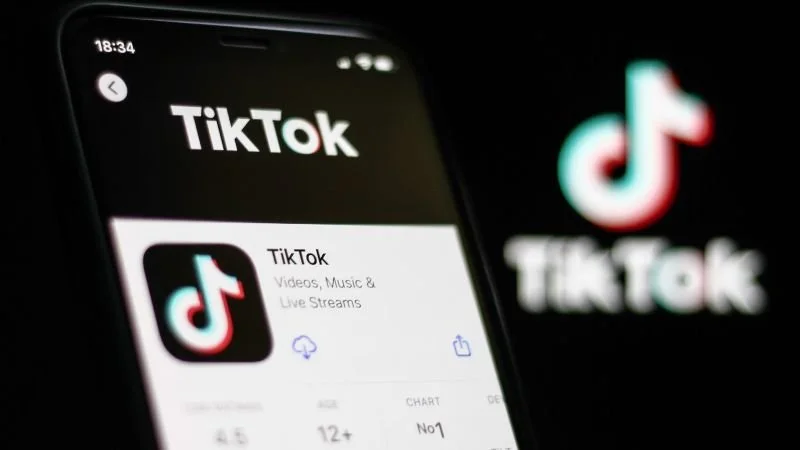Beyond TikTok: Strategies in a Changing Social Media Landscape
Tik Tok, Tik Tok…the clock is ticking, and time could be running out for TikTok in the U.S., even though the ban received an extension for the moment. While a vast majority of TikTok users lost sleep over the temporary ban last week, some nonprofit communication leaders were considering ways to expand their digital footprint in other ways.
In part one of this series, we explored how nonprofits are leveraging TikTok to connect with audiences and amplify their missions. As billionaires and investors explore the possibilities of buying the platform so it is owned by a U.S.-based company, the future is still unknown. Whatever the outcome, we believe nonprofits should consider shifting focus and exploring other platforms. One thing we know for certain is that the digital and social landscape continues to evolve, and that’s not going away.
So, what does this mean for your communication strategy? The answer: adaptability is key.
Navigating these shifts is essential for nonprofits to maintain audience engagement and drive mission-focused impact. From the uncertainty of TikTok to emerging platforms like Threads and Bluesky, nonprofits must remain flexible, experiment with new tools and stay focused on their core goals. Here’s what you need to know to navigate these changes without feeling overwhelmed.
Focus on Goals and Strategy
The key to staying ahead is not trying every new platform but setting clear goals that align with your mission. Before diving into new tools or platforms, ask yourself:
What do we want to achieve on social media?
Who is our target audience, and where are they most active?
How can we measure success?
A solid strategy anchored in your organization’s goals will help you stay focused and avoid being overwhelmed by the sheer number of options. Use a content calendar to keep your messaging consistent and ensure your storytelling aligns with your brand.
Diversify Your Platforms
If the TikTok shutdown (even if temporary for the moment) taught us anything, it’s important not to put all your eggs in one basket. Now is the time to diversify your social media presence:
Instagram Reels: Offers a seamless transition for short-form video creators. Many nonprofits already cross-post between TikTok and Instagram, making this an easy pivot, and many nonprofits already have an Instagram presence.
YouTube Shorts: This provides another powerful avenue to share short, mission-driven videos and can help optimize your search engine rankings. With YouTube’s established user base, this is a safe bet for reaching audiences. And don’t let video intimidate you. We’ve all videographers with a phone in our hands.
Threads: Created by Meta, Threads is a Twitter alternative focused on real-time conversations. It connects seamlessly with Instagram, making it easy for users already on Meta platforms. Its fast-growing user base, especially among younger audiences, makes it a great place to join dynamic, interactive discussions.
Bluesky: Backed by Twitter co-founder Jack Dorsey, Bluesky is a platform that values user control and community engagement. Though smaller, it’s perfect for connecting with niche audiences who care about transparency and meaningful conversations. Nonprofits can use it to foster deeper, mission-driven relationships.
Key Takeaway: Meeting your audience where they are will diversify your reach and strengthen your connection points. Tailor your content to each platform’s strengths to maximize impact.
Leveraging AI and Free Tools
If you’re concerned about the time and resources required to explore something new, AI can help ease the initial workload. Tools like ChatGPT, Canva, and Trello can simplify content creation and organization, saving time while ensuring consistency. For instance:
ChatGPT: Draft captions, refine messaging, and brainstorm content ideas.
Canva: Create visually compelling graphics and videos with ease.
Trello (or other content calendar tools): Plan and organize your social media strategy using tools like Trello, Asana or Google Sheets. These platforms help you schedule content, collaborate with your team and ensure your posts align with your broader goals.
Caution note: While we encourage the use of AI, still give the output a thorough review to ensure the quality and authenticity of your nonprofit’s brand.
Engage Authentically
Social media isn’t just about broadcasting—it’s about building relationships. Commenting on posts, responding to questions, and participating in meaningful conversations can help you strengthen connections with your audience. Remember:
Meet your audience where they are. Research their preferred platforms and engage consistently.
Add value to conversations by sharing insights, stories and updates relevant to your mission.
Stay authentic—people connect with genuine voices.
Measure What Matters
To ensure your social media efforts are driving impact, track the metrics that matter most to your goals. Key metrics might include:
Engagement rate: How many people interact with your content.
Reach and impressions: The size of your audience and how often they see your posts.
Conversion rate: The percentage of users who take a specific action, like donating or signing up for your newsletter.
Focusing on the data that aligns with your objectives can help you make informed decisions and adjust your strategy as needed.
Conclusion
The social media landscape may be shifting, but your strategy can stay grounded and effective. By setting clear goals, exploring new platforms and tools, and tracking key metrics, your nonprofit can confidently navigate these changes. Remember, it’s not about doing everything—it’s about doing what works for your mission and your audience. The key is to stay flexible, stay focused and keep an open mind.
Be sure to follow along for our next blog, where we will explore even more communication tools. Think WhatsApp, GroupMe and more.

